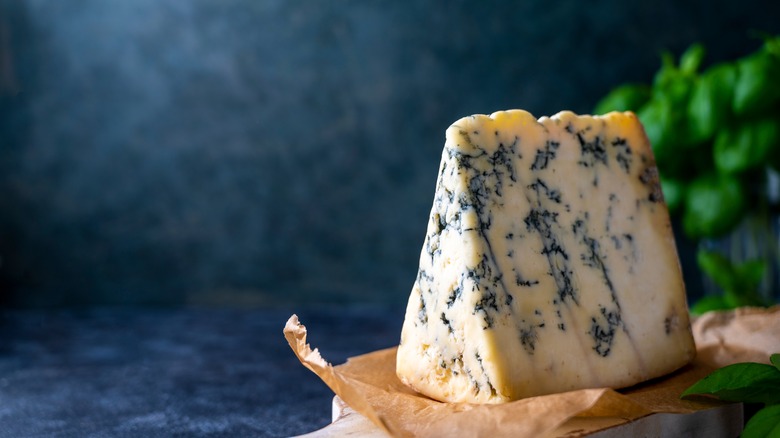How Does Blue Cheese Get Its Signature Hue?
Blue cheese may be a beloved ingredient in many dishes, from salads to burgers to dressing, but it is also divisive because of its strong (and sometimes overpowering) smell. That, paired with its strong flavor, makes it a food people either love or hate. Interestingly, blue cheese is not one of the 80 foods in Sweden's Disgusting Food Museum, while vegemite and durian are, which goes to show that food is very subjective.
One of the defining characteristics of this cheese is its signature blue-green hue, which can vary in intensity depending on the type of cheese and how long it has been aged. But if you look carefully at the cheese, the colors are in "veins" along the cheese rather than pockets of blue on the surface of the cheese. What causes this?
The simple answer lies in a process called needling. Blue cheese is a type of cheese that is made with Penicillium roqueforti mold. This mold is added to the cheese during the cheesemaking process and cheesemongers will poke the wheels of cheese with tiny needles to create small, protected holes for the fungus to thrive, in a process called needling. As air finds its way to these holes, it feeds the fungus and forms the distinctive blue-green veins that are characteristic of blue cheese.
Penicillium roqueforti mold is finicky and needs the right amount of oxygen to thrive
Blue cheeses are popular in Europe and the United States and the best-known ones include Danablu, Gorgonzola, Roquefort (which allegedly is the secret to good health), and Stilton. The cheesemaking process starts with the curdling of milk, using rennet or another acid. Once the curds have formed, they are drained and pressed into wheels. This is when the mold is added to the cheese, along with salt, to prevent spoiling. During the 60 to 90-day aging process, the cheese is pierced with needles for oxygen to enter and expand the growth of the Penicillium roqueforti mold. As the mold grows, it manufactures enzymes that break the cheese fats into fatty acids, creating the blue-green veins and contributing to the flavor of the cheese. This gives the cheese a sharp, tangy, piquant taste, and textures that range from brittle and crumbly to soft and spreadable.
The most typical blue mold used, as previously mentioned, is called Penicillium Roqueforti, a fungus that lives naturally in French caves where true Roquefort cheese is aged. However, other molds can be used, including Penicillium Glaucum, which produces a greenish coloring in cheese.
Interestingly, Roquefort is banned in the United States because it is made from unpasteurized sheep's milk, which makes it susceptible to pathogens like E. coli and Listeria. This explains why in pop culture, Americans in France often try various kinds of cheese and exclaim that it tastes like nothing they've ever eaten. As it turns out, there is some truth to it.
The blue veins are not always a measure of flavor
The color of blue cheese can vary depending on the type of cheese and how long it has been aged. For example, younger blue cheeses may have a milder flavor and a less intense color, while older cheeses may have a stronger flavor and a more pronounced blue-green hue. But taste, and even color, is relative and subjective.
Given that we are conditioned to avoid food that looks or smells spoiled, it can be difficult to separate perfectly good blue cheese from one that is moldy (in the bad way). When in doubt, pick a chunk of the blue cheese and see if you can spot mold spores, which are typically fuzzy and ranging from white, green, black, blue, to gray in color. If not, it is safe to consume.
Regardless, it is good practice to store blue cheese properly since it contains live microorganisms. Blue cheese can last 2-3 weeks in the refrigerator, especially if kept in the coolest, driest part. Some experts also recommend keeping it in the cheese paper it came in to keep it fresh.


